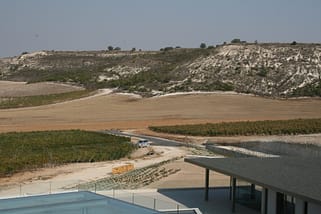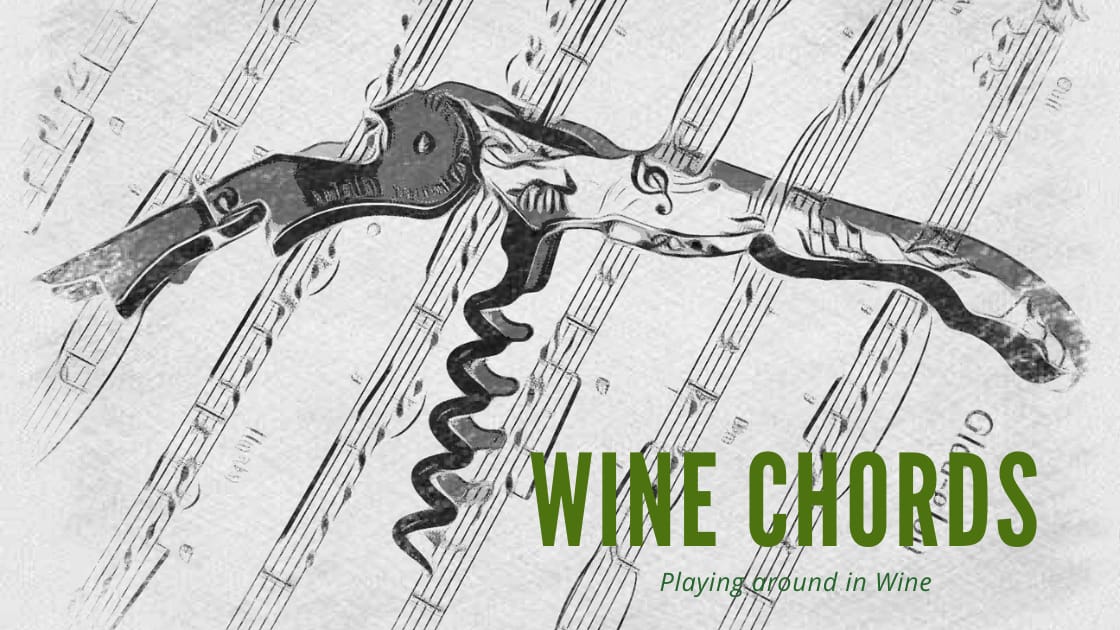
Squeezed in between our Rueda and Rioja days we had a short stay in Ribera del Duero. Indeed we had two very interesting visits on Spain’s national holiday. Summed up very briefly the four producers can be said to represent big variations on the theme:
*Aalto: An intriguing story, a glimpse of glory and meaty red wines for ageing
*Valtravieso: Organic high-altitude wines; the great discovery of the trip
*Alfredo Maestro: Natural small-scale wine, as pure and fruity as they come
*Pingus: Legendary, but rooted in reality; biodynamics; ageworthy wines, but already possible to predict what will come
What their creators have in common: A deep passion, knowledge and respect for the land and for the tempranillo fruit, or tinto fino, as it is often referred to here, and a desire to express it in the wines. Always with an eco-friendly approach in mind.
Bodegas Aalto
After a drive up the narrow, rugged path we knew when we saw the stately, stylish new bodega that we had come to the right place. And Javier Zaccagnini was welcoming us.
Javier started the company in 1999 together with Mariano García. -At that time I was the president of the DO Ribera del Duero, explains Javier. -I had been thinking about opening my own wine business. Mariano had for long been pursuaded by his employer Vega Sicilia to end his own project Mauro in the outskirts of Ribera, as they wanted an exclusive winemaker. After 16 years of conflict enough was enough, and Mariano left. It’s worth noting that friends of Spanish wine would be familiar with Mariano’s Maurodos in Toro, and maybe also a brand new one, Garmón. Javier has also embarked on his own project, Sei Solo, with much less fuss. (We will taste and review these wines at another occasion.)
So no doubt, with Javier from the DO and Mariano of Vega Sicilia fame, Aalto got a flying start and was a success in the market from the first day. Aalto’s style is fruity, powerful reds, good young with a hearty beef, but showing more elegance through careful ageing.
Mariano knows the area in great detail, and they own plots of tempranillo many places in the D.O., 110 hectars and 200 plots in all, none bigger than 1 hectar. The complexity and balance is a result of myriads of soil types, altitude, exposition and so on, according to Javier.
Most grapes are sourced from La Horra, a small village in the Burgos province, quite far from the bodega, but there are always varying percentages from places near La Horra like Roa and La Aguilera, then Moradillo to the south, Fresnillo or Baños more to the east – or Quintanilla, in the west where the bodega is.
Javier Zaccagnini, music lover, puts together notes from all over the D.O. to form his chords
Javier tells about how he brought his son Michael into the company. -Michael was studying oenology, and insisted on receiving the lowest possible pay according to Spanish law, Javier says. -Being near and learning from ‘the master’ was enough for him. I had to accept, for a year, but then I had to rise his salary because he was so good, and he worked hard and independently. The thing was that I couldn’t treat him different because he was my son, in this case: I couldn’t treat him worse than others!
Javier and his son Michael, now oenologist together with Mariano García
Two wines are produced, Aalto and Aalto PS (that stands for ‘pagos seleccionados’, selection of plots), that retails for around 30 and 60€ respectively. The grapes are exclusively tinto fino (or tempranillo), as cabernet and merlot have too long cycles for maturing here. And all vines are at least 60 years old. PS is basically from La Horra. The alcohol fermentation lasts 5-10 days. The temperatures are raised from 10 to 14˚C when they want the fermentation to start.
When asked “how organic” the farming is, Javier says that they don’t want to damage the planet. Thus the farming is organic, not certified though, but it might be that something would be used to prevent mildew. Only natural yeasts are used.
We tasted the wines in the 15 vintage.
Aalto 2015: Dark with violet rim. Dark fruits, blackberry, herbs, toast, coffee. Rich, big in the mouth, strong tannins after medium plus roasted barrels. (14,8% alcohol)
Aalto PS 2015: Deep purple, still darker. Blackberry and blueberry, toast, while lickorice and anis adds to the freshness on the nose. Rich and heavy, this one too with ‘demanding’ texture, and big in the mouth. It’s somewhat more oaky, but it’s made for a long life.
Valtravieso
High up in Piñel de Arriba in the Valladolid province some 920-950 meters above sea level we found Valtravieso, the journey’s biggest surprise. Here I will report only briefly from the visit, as the long story has already been published here.
Ricardo Velasco works very naturally, the farming is dry and if all is well nothing is added.
High up in Piñel is a long ripening processes, which is good for the aromas and flavours and improves the acidity in the wines. The long sun exposure gives good colour to the grapes. The great differences between day and night, especially in summer, when temperature can drop 18º C, brings more polyphenols, and with it higher antioxidant content.
At Valtravieso they believe in launching the wines on the market when they are approaching their peak for consumption. This is how it used to be all over the country, but in today’s market it’s rather unusual.
Some wines from the tasting:
Crianza 2015: Cherry red. Very fruity, some coffee, spice, herbs, pine. Rich, but with a fresh acidity, long, and the high alcohol (14,5%) is no problem.
Tinta Fina 2015: Dark. Very fruity, with blackberry, pine, truffles, and a flinty mineral character. A lot of structure, rich, somewhat heavy at 15% alcohol, but still the fine acidity shines through. (Tinta fina is yet another variation on the name tempranillo.)
Gran Valtravieso 2014:
Dark cherry red. Very fruity, cool aroma, with red berries, a balsamic note, hints of vanilla and toffee. It’s rich, yet luscious, with high acidity that contributes to the long aftertaste. I would call it elegant, but due to the alcohol content it’s advisable to cool it down a bit.
Parking the car outside another humble bodega building. Best to have the notebook ready…
It was Julia Zhdanova, assistant to the winemaker, who welcomed us and guided us through the facilities and the history behind Pingus. There are many people working to ensure that everything is right. Among them are 6 people in analysis, who are helping other producers in the area too. They also work in collaboration with universities, such as the one in Cádiz for yeast environments and Valencia for bacteria. The winemaking at Pingus is very natural, and biodynamic principles are used. But in case something goes wrong, you can be sure that there is a back-up plan.
The main wine ferments in 1800 liter barrels, while Flor ferments in tank. The vinification has been altered a bit through the times, towards less new oak and less extraction. Flor now spends 18-22 months in 30-40% new oak, while Pingus sees mostly 2nd year oak for 24 months. Fermentation starts when the must is heated. There is not much extraction these days, and almost no pumping-over: For the current vintage nothing. Psi is fermented in cement tanks and large old wooden casks, and in general little oak is used. For the time being it’s made in rented fascilities.












































































